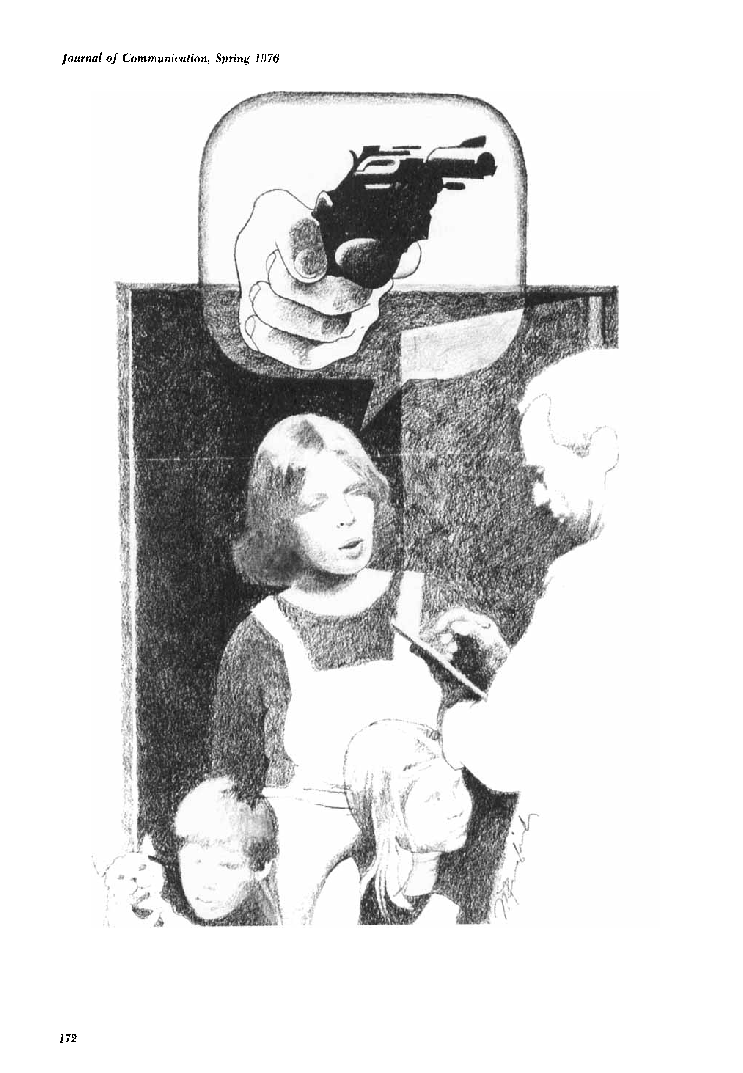Cultivation Theory ¶
Cultivation theory (sometimes referred to as the cultivation hypothesis or cultivation analysis) was an approach developed by Professor George Gerbner, dean of the Annenberg School of Communications at the University of Pennsylvania. He began the 'Cultural Indicators' research project in the mid-1960s, to study whether and how watching television may influence viewers' ideas of what the everyday world is like. Cultivation research is in the 'effects' tradition. Cultivation theorists argue that television has long-term effects which are small, gradual, indirect but cumulative and significant.
They emphasize the effects of television viewing on the attitudes rather than the behaviour of viewers. Heavy watching of television is seen as ‘cultivating’ attitudes which are more consistent with the world of television programmes than with the everyday world. Watching television may tend to induce a general mindset about violence in the world, quite apart from any effects it might have in inducing violent behaviour. Cultivation theorists distinguish between ‘first order’ effects (general beliefs about the everyday world, such as about the prevalence of violence) and ‘second order’ effects (specific attitudes, such as to law and order or to personal safety).
Gerbner, G., & Gross, L. (1976). Living with television: The violence profile. Journal of Communication, 26(2), 172-199.
Gerbner, G., Gross, L., Morgan, M., & Signorielli, N. (1986). Living with television: The dynamics of the cultivation process. In J. Bryant & D. Zillman (Eds.), Perspectives on media effects (pp. 17–40). Hilldale, NJ: Lawrence Erlbaum Associates.

Cultivation theory [PNG image (437.59 KB)]
 LivingWithTelevision_TheDynamicsoftheCultivationProcess.pdf (5.85 MB)
LivingWithTelevision_TheDynamicsoftheCultivationProcess.pdf (5.85 MB)Specifically focuses on television effects.
How portrayal of violence on television affects its viewers.
It argues that
- Violent content of television programming influences audiences' view of social reality.
- Viewers who watch lots of TV will overestimate the occurrence of real-life violence.
- Therefore, viewer perceive the world as "mean and scary".
- Television became a central medium for anyone. Nearly 99% of Americans have at least one set of television; and watch 7 hours of TV programming each day. Television overwhelmed personal conversation, books, religion, and many other medium as the primary source for storytelling.
- TV influences audience perceptions of social reality, and shapes the American culture in terms of how individuals reason and relate with others. TV portrays only a certain types of life. Depiction of current events, stories, dramas, comedies, etc. are limited and biased.
- The effects are constantly found albeit it's limited.
. . . overt expression of physical force (with or without weapon, against self or others) compelling action against one's will on pain of being hurt and/or killed or threatened to be so victimized as part of the plot.
-- includes carton violence, comedic or humorous violence, accidental violence,
-- excludes ambiguous source of violence, such as verbal assaults, threats, and inconsequential gestures (e.g., sticking out one's finger).
This definition is used to measure the violence in TV programing, TV violence index.
Perception difference-- includes carton violence, comedic or humorous violence, accidental violence,
-- excludes ambiguous source of violence, such as verbal assaults, threats, and inconsequential gestures (e.g., sticking out one's finger).
This definition is used to measure the violence in TV programing, TV violence index.
- Prime-time TV violence (8:00-11:00 pm):
- more than half of prime-time programs contain violent content; and
- 20 violent acts per hour in children's program
- Heroes and villains alike engage in equal amount of violence.
- more than half of prime-time programs contain violent content; and
- Victims are minority backgrounds; AA, Latino, underprivileged, elderly, disabled, or female are more likely to be victims of violence than are White, middle-class, male characters.
Heavy viewer : 4 or more hours of TV viewing audience
vs. Light viewer : less than 2 hour of TV viewing audience
--vs. Light viewer : less than 2 hour of TV viewing audience
- Heavy viewer tend to think that they will be engage in any sort of criminal activities -- 1000 times greater than the actual crime statistics.
Main stream
Heavy viewers develop a common view of social reality based on the content of television.
ResonanceViewers experience the congruency between their own violence experiences and the one seen in TV. -- reinforcement.
Recent studies show that these are not exclusive in TV violence; but, happens in other portrayal of reality such asgender roles, personal relationships, parenting, work life, political views, etc.










